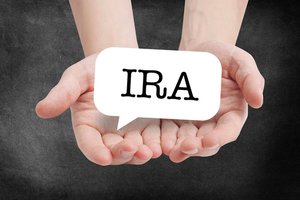Inherited IRAs: Key Points & Deadlines You Need to Know
During your lifetime, you can designate the beneficiary of your choice to inherit your IRA. For most people with families, this would include your spouse, your children, and other individuals. However, you can also name a charity, a trust, or your own estate as a beneficiary of your IRA. In most instances, the beneficiary you designate will not affect how quickly your retirement plan must be paid out during your lifetime.
Upon your passing, the beneficiaries who inherit your IRA will be forced to take “Required Minimum Distributions” once they own the assets. The payout options available to individual beneficiaries generally depend on (1) whether you died before your own “Required Beginning Date,” and (2) who remains a designated beneficiary on September 30th of the year following your death. For most retirement account owners, April 1st of the year after you turn 70-1/2 will be the your “Required Beginning Date”—so it matters to your beneficiaries whether you die before or after this date.
If you die before your “Required Beginning Date,” your beneficiary can stretch the payout over his/her lifetime. If you die after your “Required Beginning Date,” the age of the beneficiary will determine how quickly the assets must be paid out. If you name young beneficiaries, the tax-deferral of your retirement assets could be stretched out over decades because IRS rules allow individual beneficiaries to use their own life expectancies in calculating payouts for inherited IRAs. If you named multiple individuals as beneficiaries and the account is not split into separate accounts, the oldest person’s lifetime will control the payout schedule.
If you have named non-individuals as primary beneficiaries, this could limit the payout options available to individual beneficiaries. Non-individual beneficiaries can be removed by disclaimer or distribution if handled properly and accomplished by September 30th of the year after your death.
These are the key dates you and your beneficiaries should keep in mind:
December 31st of the year of death: Deadline for the decedent’s final Required Minimum Distribution.
Nine Months after date of death: Deadline for beneficiaries to make qualified disclaimers.
September 30th of the year after death: Deadline for determining Designated Beneficiary. Before this date, undesirable beneficiaries can be eliminated from the pool of persons eligible to become the Designated Beneficiary by distribution or disclaimer.
October 15th of the year after death: Deadline for re-characterizing the decedent’s Roth IRA conversion or for re-characterizing a regular contribution to a Traditional or Roth IRA.
October 31st of the year after death: Deadline to provide Trustee documentation to qualify a trust beneficiary as a retirement account’s Designated Beneficiary for purposes of making Required Minimum Distributions after the account owner’s death.
December 31st of the year after death: Deadline for setting up separate accounts so each beneficiary can make Required Minimum Distributions over his/her life expectancy.
December 31st of the year after death: Deadline for making first Required Minimum Distribution (with the exception of when the decedent died before reaching his/her own Required Beginning Date and the decedent’s spouse is the beneficiary).
Accumulating retirement assets takes time and hard work. For your beneficiaries to maximize the gift of inheriting an IRA, there are many important deadlines and rules to be followed. We strongly suggest you seek professional advice about naming your IRA beneficiaries and on managing an IRA inheritance.



